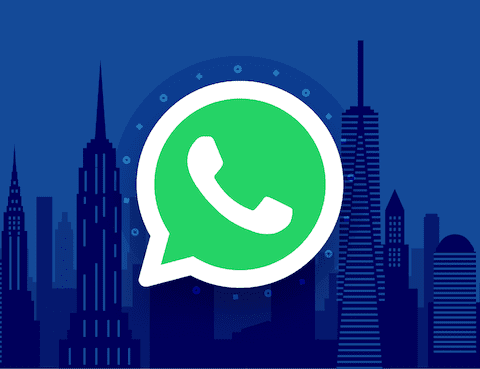Facebook, YouTube, TikTok, Twitter and even LinkedIn have pushed out “lite” versions — smaller and simpler iterations of their platforms — and that has everything to do with emerging markets, analysts say.
Last month, Spotify Lite officially launched in 36 markets, while Tinder has announced plans to launch its own “lite” app.
With around 6.5 billion people living in developing economies, there’s a lot of potentials for technology firms to tap — but they need to take a different approach because of technological limitations in those markets, according to analysts.
Users in the developing world typically use basic mobile phones, instead of larger or more advanced devices. That poses a problem amid increasingly advanced apps. Aside from taking up space in devices, full versions of apps have many features that take time to load, while others gobble up large amounts of mobile data.
“Smartphone penetration has been growing quickly in emerging markets … but the limits on data consumption and connectivity can be challenging for users,” said Jun Wen Woo, a senior analyst at IHS Markit.
A Pew Research Center survey reported that a median of 27 percent of adults in 11 emerging market countries say they have a smartphone, but not a tablet or computer at home. In the U.S., nearly 75 percent of adults own desktops or laptops, while around 50 percent own tablet computers.
The prevalence of fixed-broadband internet access is also lower in developing countries, while mobile data continues to be expensive for users in those markets, according to a 2017 GSM Association report.
“Tech companies are offering Lite apps to tailor their services to data-conscious users,” Woo said.
The type of device also matters, said Adrian Lee, a senior director, and analyst at Gartner. Consumers in emerging markets generally use entry-level, slower smartphones which means users are likely to be limited in the number of applications they can download and run smoothly on a regular basis, he pointed out.
Network infrastructure also lags behind the developed world, leading to slower internet speeds and a less pleasant experience for users.
“When we travel, for example, when we use WiFi (in) different other places, you realize that some WiFis work better and some don’t,” said Naveen Mishra, associate director for ICT at Frost & Sullivan.
‘Less is more’
To get around those issues and to attract users in emerging markets, technology firms have been launching “lite” apps, which take up less space on devices, have fewer features and use less data — while still trying to provide a similar user experience.
However, some functions are usually sacrificed.
”(Tech firms) need to figure out that in this market, this particular feature of the application is the most used, or some of the other features are not needed,” said Mishra. They can then cut out those features in order to make it lighter, he said.
For example, Tinder Lite will take up 25 times less space on smartphones and consume less mobile data, according to Tinder CEO Elie Seidman. But the app will still have “all core functionality that has made Tinder so popular,” Seidman said.
That includes “the ability to Like or Nope profiles, match, and chat with new people who are mutually interested in connecting,” he added.
Frost & Sullivan’s Mishra said the concept for “lite” apps is that “less is more.”
An app won’t be successful just because it is complex with many capabilities included, he said. In fact, a lighter app has a higher chance of more customers being able to use it, he added, citing trends.
Gaining traction
There have been a growing number of downloads for “lite” applications in major developing regions, according to Sensor Tower, an app analytics platform.
Facebook Lite has been downloaded more than 650 million times in India, South America, and Southeast Asia, and is the most downloaded “lite” app in those regions.
In India and Southeast Asia, TikTok Lite is the fifth most popular “lite” app, and is targeted at “first-time smartphone users who may not have access to a high-speed internet connection,” said a spokesman. It has been downloaded more than 35 million times in India and Southeast Asia since the start of this year.
Other popular “lite” apps include YouTube Go, Messenger Lite and Opera Mini, a web browser similar to Google Chrome and Internet Explorer.
In fact, while the full versions of apps still have more downloads, their “lite” equivalents are seeing a higher rate of adoption, according to Sensor Tower.
Sensor Tower’s co-founder, Alex Malafeev, said: “Lite versions of popular mobile apps should continue to outpace the adoption of their fully-featured counterparts in developing markets … where constraints on data and prevalence of lower-end devices are driving their popularity.”
“Any reasonably popular app can benefit from a lite version in these markets, and developers should be thinking about offering them from the outset there,” he said.
Tinder, meanwhile, is preparing to launch its “lite” version as part of its “sharpened focus on the APAC region,” the company’s CEO, Elie Seidman, said.
“There are roughly 300 (million) singles in the APAC market and a growing population of tech-savvy young people looking to meet new people,” he said, adding that technology adoption is high.
Match Group, Tinder’s parent company, expects Asia will make up 25 percent of its portfolio’s total revenue by 2023.
How ‘lite’ apps compare to full versions:
Facebook versus Facebook Lite: Users who are tired of having many different apps would be happy to have Facebook Lite, which allows access to Messenger functions without exiting the app. The lighter version of the app also retains many classic Facebook features, but Facebook Lite doesn’t have the option of letting videos play automatically on mobile data. Facebook users can set this in their preferences, but videos on Facebook Lite can only be set to auto-play on WiFi.
YouTube versus YouTube Go: One big difference between these two apps is that YouTube Go allows users to download videos so they can be accessed on the app later, even without an internet connection. That allows each video to be viewed over and over without consuming more mobile data. The videos can also be shared offline via Bluetooth technology. YouTube Go also informs users how much data is required to stream or download any video.




